18 Hilarious Common Misconceptions People Have About The Middle Ages
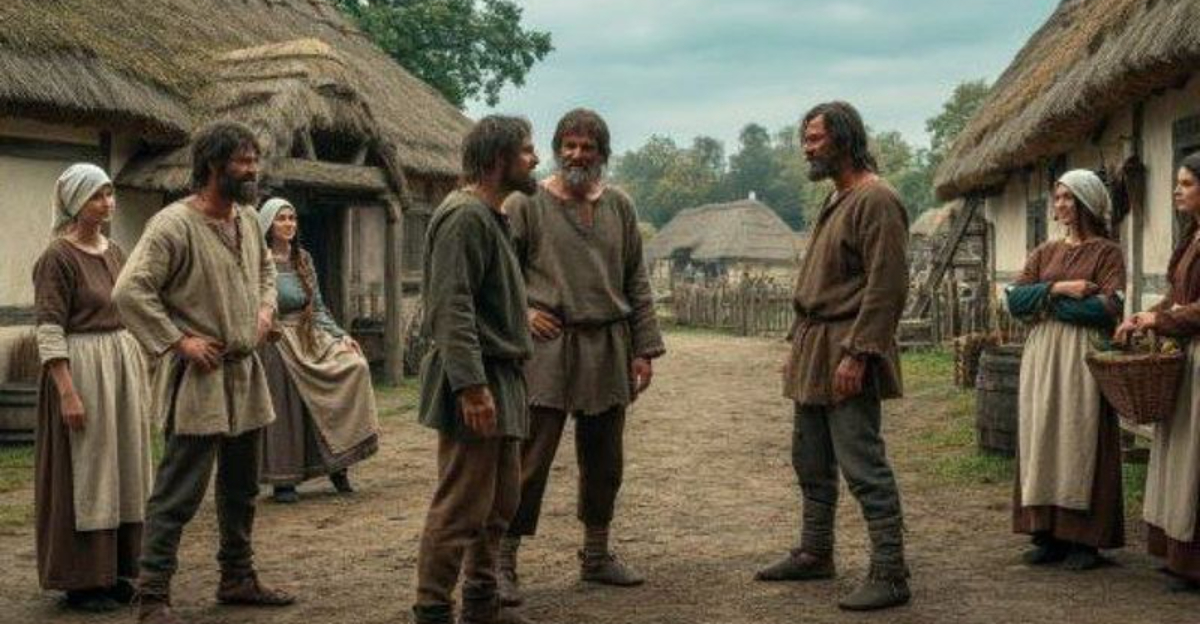
I’ve always been fascinated by the Middle Ages, but wow—people sure have some wild ideas about that time! Back in my history professor days, I heard it all: “Everyone passed at 30,” “People thought the Earth was flat,” and of course, “Knights spent all day rescuing helpless damsels.”
These misconceptions aren’t just wrong—they’re hilariously wrong. The truth is far more complex (and often more interesting) than the myths we’ve picked up from movies and pop culture.
For starters, while life expectancy averaged around 30, that number includes high infant mortality—if you made it past childhood, you had a decent shot at living into your 50s or beyond. And knights? Most of their time was spent managing land and politics, not slaying dragons or posing heroically.
So let’s dust off our chainmail and dive into the truth behind some of the most persistent medieval myths that have somehow lasted longer than most actual castles!
1. The Flat Earth Fiasco
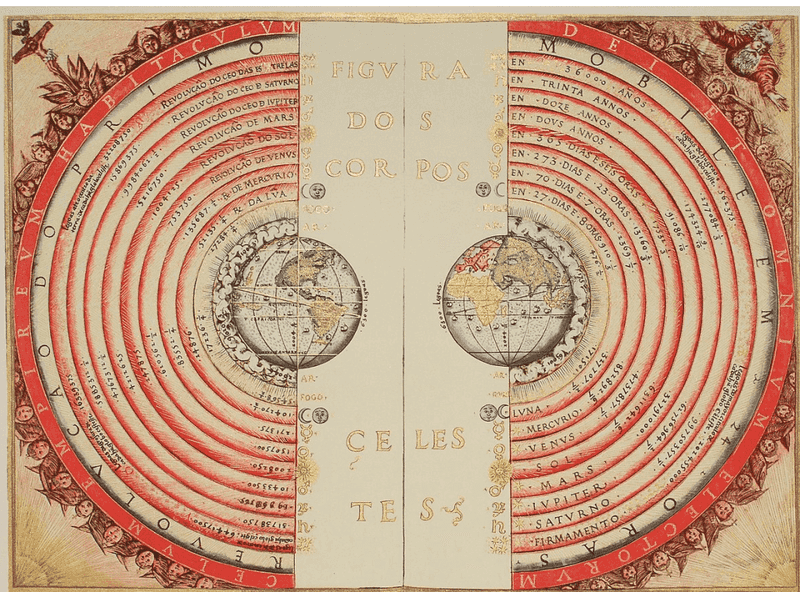
My nephew once confidently announced at Thanksgiving dinner that Columbus proved the Earth was round to all those ‘dumb medieval people.’ I nearly choked on my turkey!
Educated folks in the Middle Ages absolutely knew the Earth was round. This knowledge wasn’t lost with the ancient Greeks—medieval scholars like Thomas Aquinas referred to the world’s spherical shape in their writings. Ships disappearing hull-first over the horizon was common observation for sailors.
The myth that medieval people believed in a flat Earth actually originated in the 19th century, when writers wanted to paint the Middle Ages as a time of ignorance and superstition. Columbus’s dispute with scholars wasn’t about the Earth’s shape but its size—he thought Asia was much closer than it actually was. Turns out Columbus was the one who got it wrong!
2. Baths? What Baths?
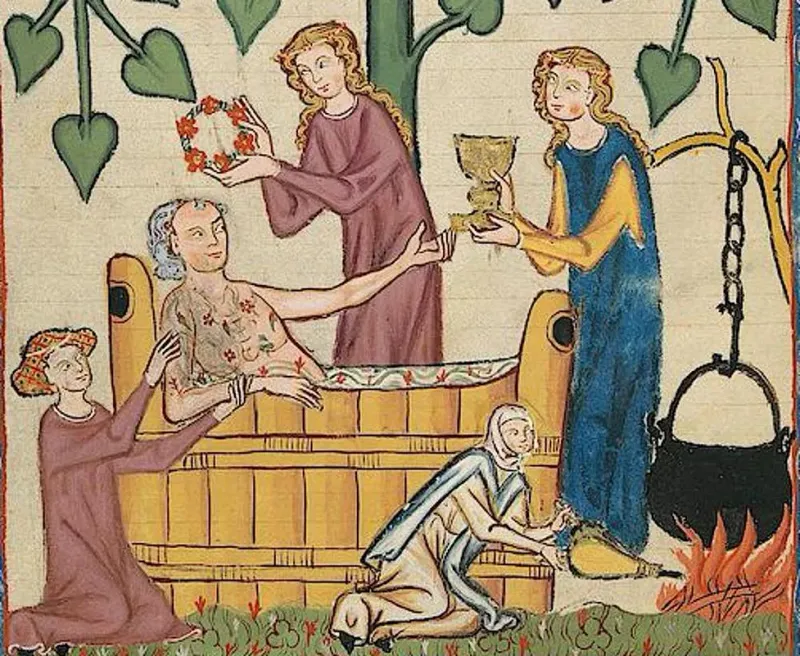
Last summer, I visited a medieval fair where the guide joked that we should be grateful for modern plumbing since medieval folks bathed once a year. What hogwash!
Medieval people actually valued cleanliness and bathed regularly. Public bathhouses were common in towns and cities across Europe, serving as social gathering spots similar to our modern spas. Many households owned wooden tubs for private bathing, and personal hygiene items like combs, tweezers, and ear scoops have been found at archaeological sites.
The notion that medieval people were perpetually filthy emerged during the Renaissance when writers wanted to portray their own era as superior. Ironically, bathing became less common in the 16th-17th centuries due to fears that water opened pores to disease. So the next time someone claims medieval folks stank to high heaven, remind them that Renaissance royalty might have been the smellier bunch!
3. Vikings and Their Nonexistent Horned Helmets

I once dressed as a Viking for Halloween, complete with a horned helmet. My history professor friend hasn’t let me live it down for 15 years!
The iconic image of Vikings sporting horned helmets is completely fictional. No authentic Viking helmet ever discovered has horns. Real Viking helmets were typically simple, conical or rounded metal or leather caps designed for practical battle protection—not decorative headgear that would be dangerously easy to grab in combat.
This misconception stems from 19th-century creative interpretations, particularly costume designer Carl Emil Doepler’s work for Wagner’s opera ‘Der Ring des Nibelungen’ in the 1870s. The dramatic horned helmets looked fantastic on stage and permanently warped our perception of Norse warriors. Viking reenactors today cringe at horned helmet depictions, much like I cringe remembering my historically inaccurate costume choice!
4. Everyone Passed at 30

During a family reunion, my uncle remarked, ‘Back in medieval times, you’d already be dead!’ I was 32 at the time.
The infamous ‘everyone died at 30’ myth confuses average life expectancy with actual lifespans. High infant and childhood mortality rates drastically lowered the statistical average, but adults who survived childhood illnesses could often live into their 60s or 70s. Medieval records show plenty of people living long lives—Eleanor of Aquitaine reached her 80s!
Medical care existed, though primitive by our standards. Herbal remedies, bone-setting, and even rudimentary surgeries were practiced. Many monasteries maintained infirmaries and herb gardens for healing. While certainly more dangerous than modern times, medieval life wasn’t a constant dance with the Grim Reaper that ended promptly at 30. I wonder what medieval folks would think of our modern obsession with anti-aging creams!
5. The Myth of Constant Warfare
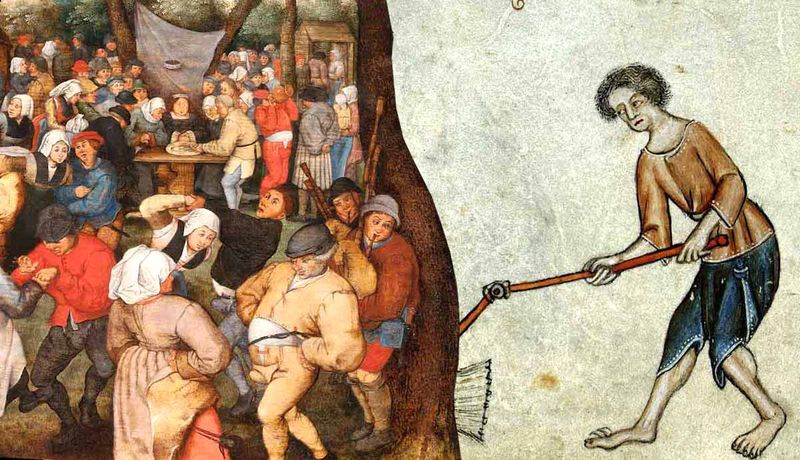
Playing knights with my nieces involves constant sword-fighting because that’s what they think medieval life was—endless battles! If only they knew the truth.
Contrary to popular belief, medieval people weren’t constantly engaged in warfare. Most spent their days farming, crafting, or trading. While conflicts certainly occurred, they were typically seasonal (fought when fields didn’t need tending) and involved relatively small forces compared to modern warfare.
Historical records show more focus on mundane activities than epic battles. Court documents detail property disputes, marriage contracts, and trade agreements far more frequently than military campaigns. Medieval literature and art also depicted peaceful activities like feasting, hunting, and courtship alongside warfare. damsels!
6. Chastity Belts: More Fiction Than Fact

During a museum tour in Europe, a teenager snickered at what was labeled a ‘medieval chastity belt.’ I couldn’t help but whisper, ‘That’s actually a 19th-century fake.’
Chastity belts as we imagine them—metal undergarments with locks—were likely never used in the Middle Ages. Most ‘medieval’ chastity belts in museums today were created in the 18th or 19th centuries as curiosities or jokes. The earliest mentions of such devices appear in 15th-century satirical writings, not as descriptions of actual practices.
The myth gained traction during the Victorian era when many fake ‘medieval’ artifacts were produced to satisfy interest in what was perceived as a barbaric past. Similarly, many torture devices attributed to medieval times were actually Renaissance inventions or Victorian exaggerations. The obsession with medieval sexual control says more about later periods’ fascination with the past than actual medieval practices. Medieval marriage beds weren’t fortified with hardware!
7. Primitive Tools and Technology

My brother once claimed medieval farmers just ‘poked at the ground with sticks.’ As someone who’s studied agricultural history, I had to set him straight!
Medieval technology was surprisingly sophisticated. Water-powered mills, complex mechanical clocks, eyeglasses, and elaborate agricultural systems all existed during this period. The heavy plow, horse collar, and crop rotation methods revolutionized farming efficiency. By the late Middle Ages, Europe had technologies that would have amazed ancient Romans.
Craftspeople created intricate mechanical devices like astronomical clocks that tracked celestial movements with impressive accuracy. The famous 14th-century Salisbury Cathedral clock still works today! Universities were established, manuscripts preserved knowledge, and engineering feats like Gothic cathedrals required advanced mathematics and physics understanding.
8. Witch Hunts Were Medieval Madness
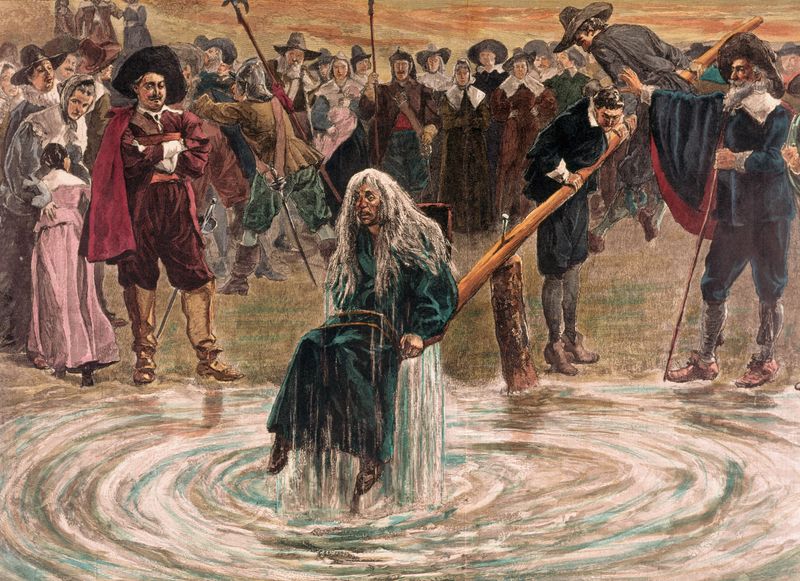
I once overheard a tour guide at a medieval castle describing ‘countless witches burned at the stake during these dark times.’ I bit my tongue, but barely.
The widespread witch hunts and burnings most people associate with the Middle Ages actually occurred primarily during the Early Modern period (1450-1750), after the Middle Ages had ended. Medieval authorities were generally skeptical about witchcraft claims. The Church often treated such accusations as superstitious rather than factual.
The infamous witch-hunting manual ‘Malleus Maleficarum’ wasn’t published until 1486, and the peak of European witch trials occurred in the 16th and 17th centuries. During most of the actual Middle Ages, people who claimed magical powers were more likely to face minor penalties for fraud than execution for consorting with the devil.
9. The Myth of the Iron Maiden
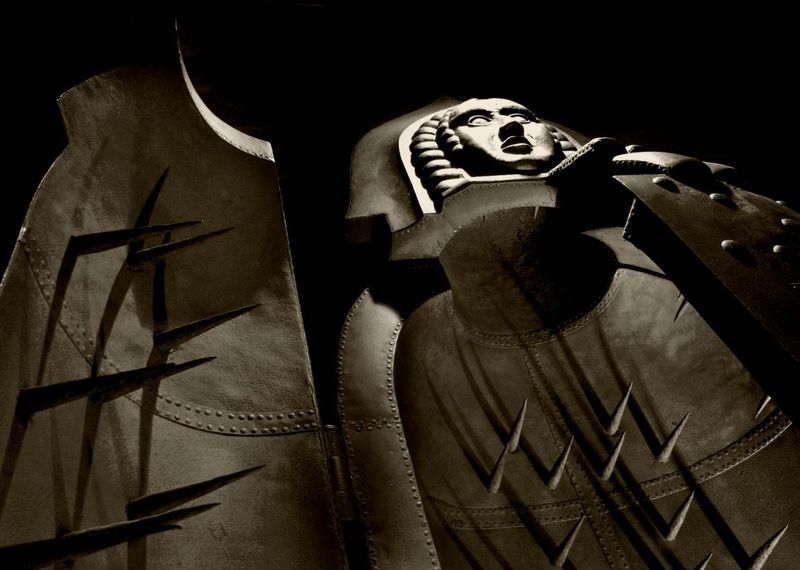
A horror movie I watched featured a medieval torture device called the iron maiden. I laughed so hard my popcorn went flying—Hollywood got it wrong again!
The iron maiden—that coffin-shaped contraption lined with spikes—was never used in the Middle Ages. No authentic medieval records mention such a device. The first iron maidens appeared in the 18th century as museum pieces, created to attract tourists interested in the supposedly ‘barbaric’ medieval period.
Many torture devices attributed to medieval times were either completely fabricated or greatly exaggerated by later generations. While judicial torture did exist in medieval Europe, it was typically regulated and less theatrical than popularly depicted.
10. Eating Without Utensils Like Animals
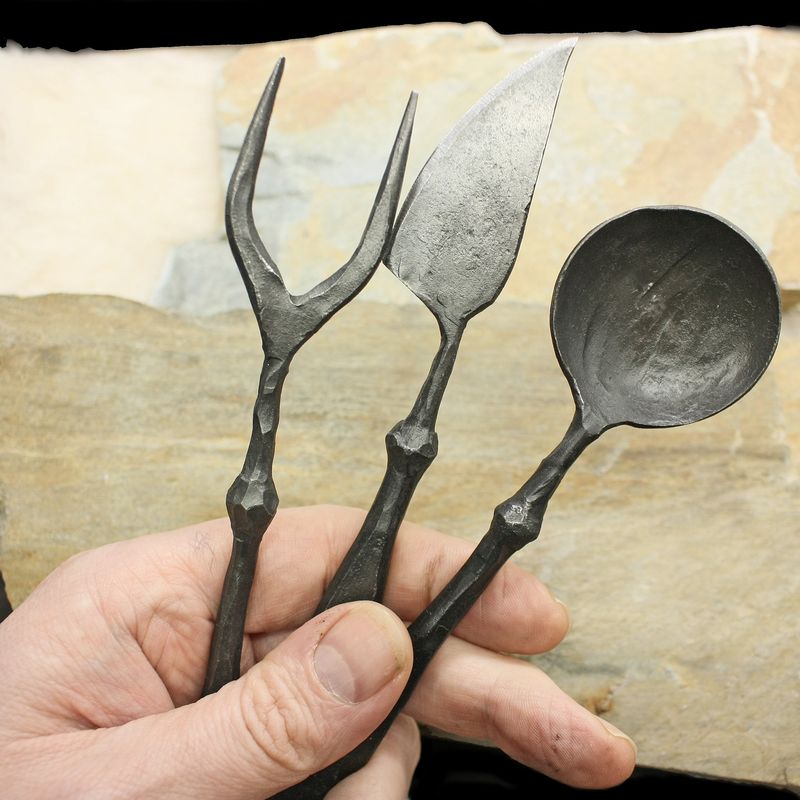
At a ‘medieval-themed’ restaurant, we were given only knives—no forks or spoons—because ‘that’s how they ate back then.’ The historically-minded part of me silently screamed.
Medieval people absolutely used utensils! Knives and spoons were common throughout the Middle Ages. Forks became popular among the wealthy in Italy by the 11th century, gradually spreading throughout Europe. Most people carried personal eating knives, and spoons were made from wood, horn, or metal depending on one’s social status.
Table manners were also highly developed, with detailed etiquette guides instructing proper dining behavior. The misconception about medieval dining probably stems from the absence of the full three-piece place setting we’re accustomed to today.
11. Peasants Lived in Filthy Hovels
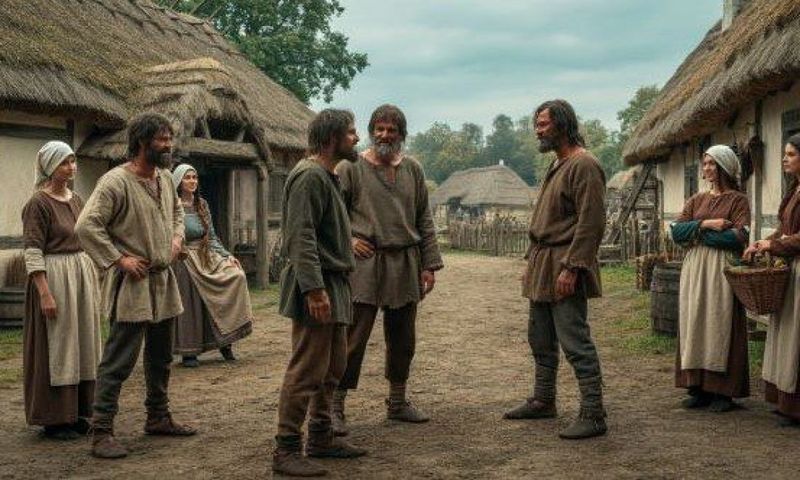
During a historical reenactment, I watched actors portraying peasants wallowing in dirt floors with pigs. Having studied medieval housing, I couldn’t help but roll my eyes.
While certainly simple by modern standards, medieval peasant homes weren’t the filthy animal pens often depicted. Archaeological excavations reveal that peasant houses typically had wooden floors, sometimes covered with rushes mixed with herbs for pleasant scents. Walls were made of wattle and daub (woven sticks covered with clay), regularly maintained and sometimes whitewashed.
Homes were generally kept clean, with separate areas for sleeping and daily activities. While animals might share space in harsh winter months for warmth, they weren’t typically permanent indoor residents. Most peasant homes had basic furniture including beds, tables, storage chests, and cooking equipment.
12. All Knights Were Noble Heroes
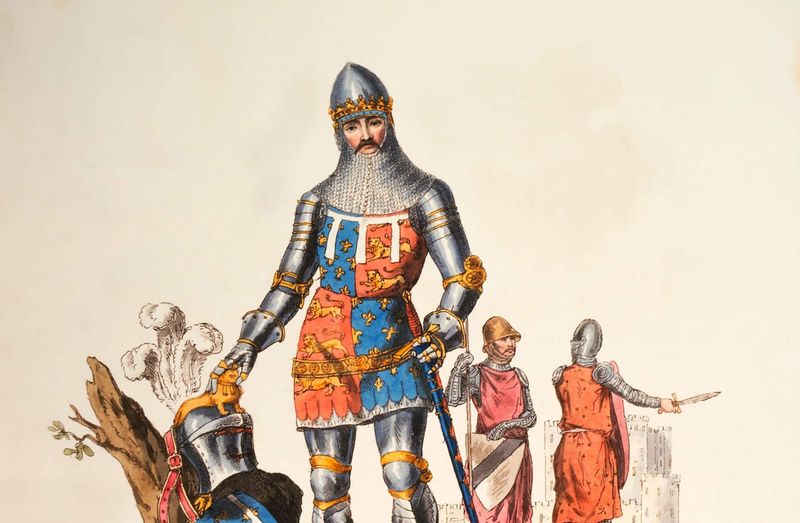
My son’s elementary school play featured knights as perfect gentlemen who rescued maidens and fought only for honor. I had to bite my tongue during the parent-teacher conference.
The romanticized image of knights as chivalrous heroes is largely a product of Victorian-era nostalgia and modern entertainment. Historical knights were primarily professional soldiers who could be just as brutal as they were brave. Many knights were essentially mercenaries who fought for whoever paid best, while others were known for terrorizing peasants and plundering villages.
The chivalric code existed more as an aspirational ideal than everyday reality. Chronicles record numerous knights who engaged in robbery, rape, and random violence. Tournament combat, often portrayed as noble sport, frequently resulted in serious injuries and deaths.
13. The Flat, Boring Medieval Diet
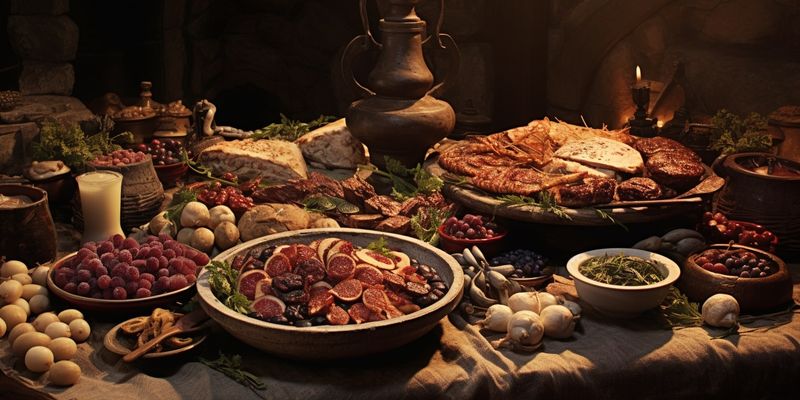
A friend once told me medieval people just ate bland gruel three times a day. As someone who’s cooked from medieval recipes, I couldn’t let that misconception stand!
Medieval cuisine was surprisingly diverse and flavorful. Spices were highly valued and widely used among those who could afford them—not to cover the taste of rotten meat as commonly believed, but to showcase wealth and sophistication. Cookbooks from the period reveal complex recipes using ingredients like cinnamon, ginger, cloves, and saffron.
Even peasant diets weren’t as monotonous as often portrayed. They ate seasonal vegetables, fruits, nuts, dairy products, and various grains beyond just wheat. Fish was common even inland due to religious fasting requirements. Regional cooking traditions flourished, with distinct flavors and techniques developing across Europe.
14. The Myth of Constant Plagues
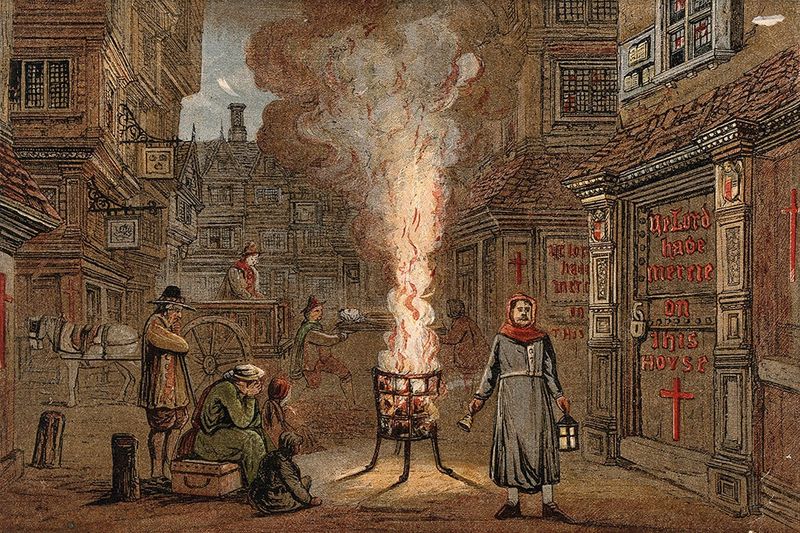
During a pandemic documentary, the narrator claimed, ‘Medieval Europe was constantly ravaged by the Black Death.’ As a medical history buff, I shouted at my TV, ‘That’s complete nonsense!’
While the Black Death of 1347-1351 was undeniably devastating, killing perhaps a third of Europe’s population, it wasn’t a constant presence. Major plague outbreaks occurred periodically, not continuously. Between outbreaks, life returned to normal, and many regions went decades without experiencing plague.
Medieval communities developed sophisticated public health responses, including quarantine systems, specialized plague hospitals, and public sanitation efforts. Venice created the first formal quarantine system in 1377, requiring ships to wait 40 days before entering the city.
15. Medieval People Never Traveled

I once had a student insist medieval people never left their villages—ever. I pulled out a map of pilgrim routes that crisscrossed Europe and watched her jaw drop.
The notion that medieval people were geographically isolated is wildly inaccurate. Pilgrimages to sites like Santiago de Compostela, Rome, and Jerusalem brought travelers from across Europe and beyond. Trade networks connected distant regions, with merchants regularly journeying hundreds of miles. Even peasants traveled to regional markets, fairs, and neighboring towns.
Medieval roads weren’t as primitive as often portrayed. The Roman road system remained partially functional, supplemented by new routes. Specialized professions like messengers, peddlers, and minstrels involved constant travel. Maritime travel connected coastal regions, with ships regularly crossing the Mediterranean and navigating European coastlines.
16. The Myth of King Arthur’s Medieval Court
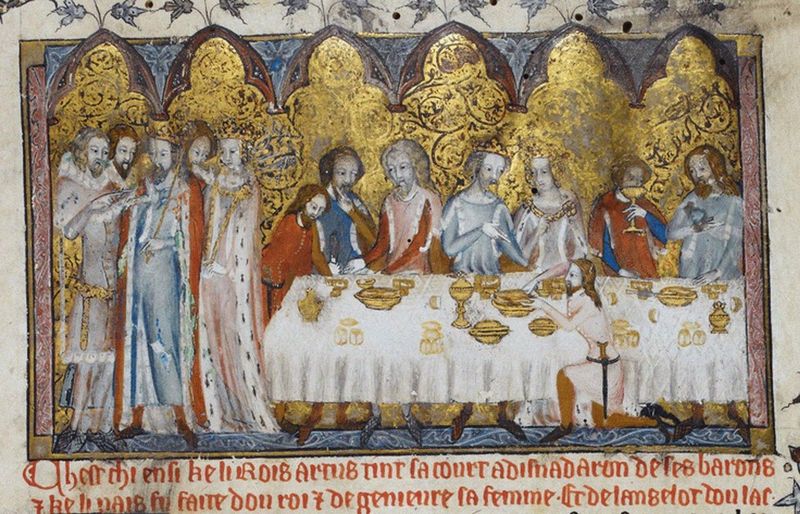
While binge-watching a King Arthur series, I couldn’t help but laugh at knights in full plate armor attending a supposedly 5th-century court. Talk about a time-traveling wardrobe!
King Arthur—if he existed at all—would have lived during the post-Roman period (5th-6th centuries), not the High Middle Ages depicted in most Arthurian tales. The familiar Arthurian legends with knights in shining armor, stone castles, and elaborate tournaments are medieval reimaginings that reflect 12th-15th century culture, not historical reality.
Medieval writers and audiences weren’t concerned with historical accuracy—they updated stories to reflect their own times. A historical Arthur would have worn Roman-influenced military gear, not plate armor developed nearly a millennium later. Similarly, Round Table knights wouldn’t have followed later chivalric codes.
17. The Dark Ages Weren’t So Dark
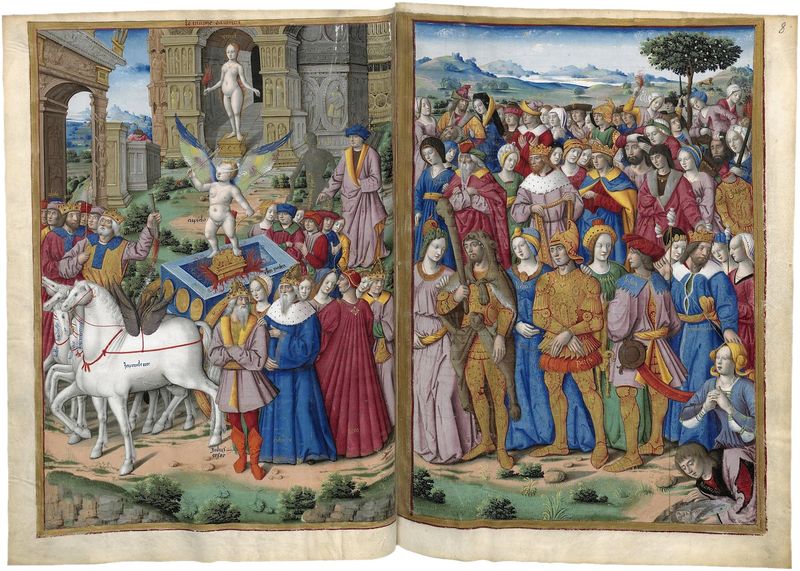
At a dinner party, someone referred to the ‘Dark Ages when all knowledge was lost.’ I nearly spat out my drink!
The term ‘Dark Ages’ has been thoroughly rejected by modern historians as a misleading characterization of medieval Europe. Far from a period of intellectual stagnation, the Middle Ages saw the founding of the first universities, remarkable architectural innovations, and preservation of classical knowledge. Monasteries served as centers of learning where ancient texts were copied and studied.
The Islamic world experienced a golden age of scientific and mathematical advancement during this period, with knowledge flowing between cultures. Technological innovations like the heavy plow, horse collar, watermills, and mechanical clocks transformed European society.
18. The Myth of Constant Religious Oppression
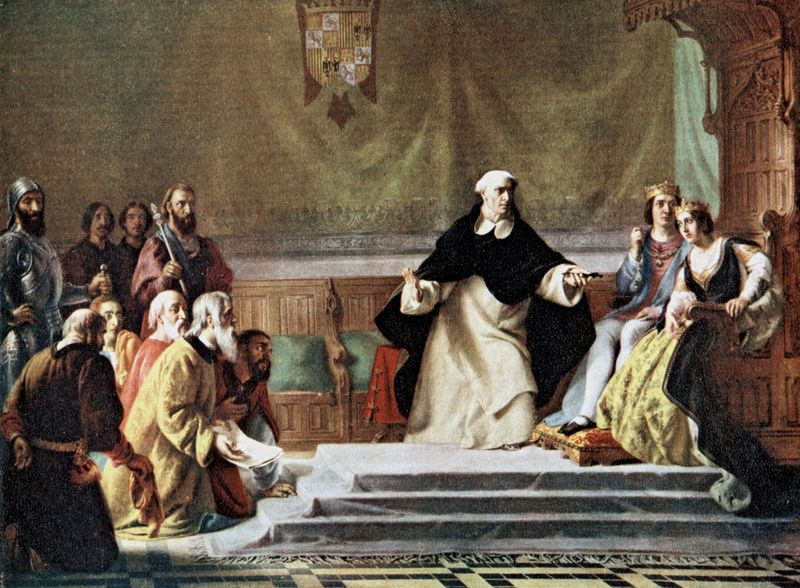
A documentary portrayed medieval Church authorities as constantly hunting heretics and suppressing all dissent. As a religious history enthusiast, I wanted to throw my remote at the screen.
While religious conformity was certainly valued, medieval religious life was more diverse and tolerant than typically portrayed. Major heresies were occasionally persecuted, but everyday religious practice allowed considerable variation. Local saints, regional traditions, and folk beliefs coexisted with official doctrine.
Religious debates flourished within universities, where scholars questioned and refined theological concepts. Jewish communities existed throughout medieval Europe, though their treatment varied greatly by region and period. Muslim, Christian, and Jewish scholars collaborated in centers like Toledo, translating and preserving ancient texts.
